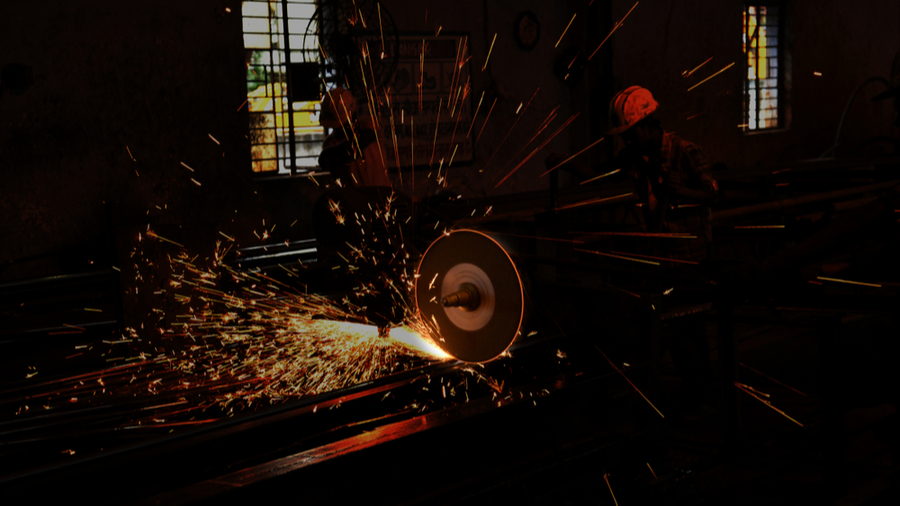Manufacturing activity continued to grow in December to meet increasing demand, a private survey showed on Monday, although the employment situation worsened as firms continued to reduce headcounts.
The seasonally adjusted IHS Markit India Manufacturing Purchasing Managers’ Index (PMI) was at 56.4 in December, a tick higher than November’s reading of 56.3 and above the critical 50 threshold for the fifth straight month. In PMI parlance, a print above 50 means expansion, while a score below that denotes contraction.
“The latest PMI results for the Indian manufacturing sector continued to point to an economy on the mend as a supportive demand environment and firms’ efforts to rebuild safety stocks underpinned another sharp rise in production,” said Pollyanna De Lima, economics associate director at IHS Markit.
International demand for Indian goods rose in December, but the growth was hampered by the pandemic.
As a result, new export orders increased at the slowest pace in the current four-month sequence of expansion. Output growth also eased to a four-month low, but remained strong, the survey said.
Employment, however, decreased again in December, thereby stretching the current sequence of job shedding to nine months.
“India’s manufacturing PMI reading for December points to a continued rebound in the sector at the end of last year. And the recovery could gain further momentum if Covid-19 vaccines are successfully distributed in India and restrictions are subsequently scaled back even further,” Darren Aw, Asia economist, CapitalEconomics, said.
“Companies stated that government guidelines to have employees working only on shifts and difficulties in finding suitable staff were the key factors causing the latest fall in payroll numbers. However, the pace of contraction was moderate and the weakest in the current downturn period," the survey noted.
On the prices front, the survey noted that input cost inflation accelerated to a 26-month high in December, with panellists noting increased prices for chemicals, metals, plastics and textiles. Output charges were lifted in response to rising cost burdens, but here the rate of inflation was only marginal.
Lima further noted that “when we combine the latest three months we see that the performance of the manufacturing industry for the third quarter of fiscal year 2020-21 was notably better than in the second quarter".
The three-month PMI average rose from 51.6 to 57.2, the survey said.
Going ahead, Indian manufacturers maintained an upbeat view that output will increase in the coming year. However, the degree of optimism weakened to a four-month low as some firms were concerned about the lasting effect of the pandemic on the global economy.
Nomura
The Nomura India Business Resumption Index (NIBRI) picked up to 94.5 for the week ending 3 January from an average of 91.7 December. Since its trough in April, economic normalisation has continued nearly uninterrupted, with NIBRI ending 2020 just 5.5 below pre-pandemic activity levels.
The continued rise in NIBRI through December and into early January was led by an improvement in mobility indices, in sync with the holiday season. Power demand has also been strong, although the latest week corrected by 2.7 per cent week-on-week after rising by 2.7 per cent and 3.1 per cent over the preceding two weeks. The labour participation rate eased to 40.3 per cent in early January from 40.9 per cent in December.
NIBRI averaged higher in December (91.7) than in November (86.3) and is starting January at another high (94.5). This faster normalisation reflects a further moderation in new cases, despite the festive and winter season.
In tandem, activity data like auto sales, import growth, GST proceeds, manufacturing PMI and diesel sales improved. While weak global growth and a sudden volte-face on domestic pandemic control are key short term risks, over the medium term, easier financial conditions, stronger global demand and accelerated vaccinations could lead to an economic upcycle in 2021.










